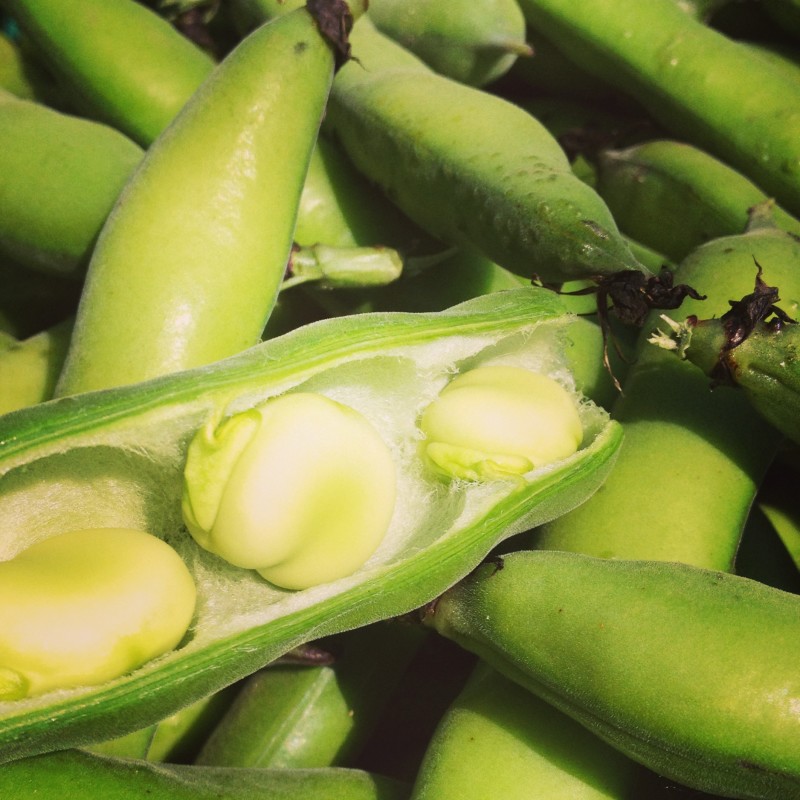
Beans (Fava)

Market Look-For’s
- Big thick pods that don’t have significant signs of rot or blackening at the seam.
- Our farm always gets little, black, bumpy dots on the outside of the pods but with no negative effect on the beans inside.
- The larger the swells in the pod the larger the beans on the inside.
Storage
- Keep within the big pod in a paper bag in the fridge.
- These beans don’t loose their sugar as quickly as peas, so if you’re deciding between which to cook first choose peas.
Notes
- In a restaurant situation, favas are shucked from their large pod, blanched and then slipped out of their outer skin. I find this to be tedious work and don’t generally prioritize it at home. Mostly I like the bit of bitterness that comes from that external pod and I’d rather spend time doing other things than double peeling a silly bean.
- There is a small portion of the population who suffer from fauvisim—an allergic reaction to raw fava beans. So while favas can be eaten raw, if your guests suddenly start exhibiting jaundice like symptoms or shortness of breath, call the hospital.
Site by Bryan Morrison

